This year, Canada’s Totem Acoustic celebrates its 35th anniversary. Since its founding in 1987, Totem has released an impressive range of passive loudspeakers, including standmount and floorstanding models, soundbars, on-wall speakers, and in-wall and in-ceiling speakers aimed at the custom integration channel.
In late 2018, Totem released its first full-range speaker with built-in amplification, the Kin Play ($1299/system, all prices in USD unless stated otherwise): a two-way, rear-ported standmount design employing a 5″ natural-fiber midrange-woofer and 1″ metal-alloy dome tweeter, powered by a 120Wpc amplifier. Totem subsequently released a powered bookshelf speaker, the Kin Play Mini ($899/system), featuring a 4″ midrange-woofer and 70Wpc amp, and a powered soundbar, the Kin Play Sound Bar ($1299).
Earlier this year, Totem released its first powered floorstanding speaker, the Kin Play Tower: a rear-ported two-way, three-driver design priced at $2250/system. Like the Kin Play and Kin Play Mini, the Kin Play Tower is sold as a stereo pair, with the electronics housed in the left (primary) speaker, and features Bluetooth connectivity with support for the high-quality aptX HD codec, line-level analog and optical digital inputs, and an MM phono stage.
Inside and out
The Kin Play Tower is available in satin white and satin black finishes. Each speaker measures 40″H × 7.1″W × 9.8″D and sits on a plinth that measures 8.7″W × 11.5″D × 0.8″H. The edges of each speaker’s front baffle are gracefully radiused, and a matching, magnetically attached grille is supplied to cover the drivers. The primary speaker weighs 37.5 pounds, and the secondary speaker is about two pounds lighter.
The primary speaker is used for the left channel and the secondary speaker for the right. Channel allocation cannot be changed, which may be a problem for listeners whose source components are located next to the right speaker.
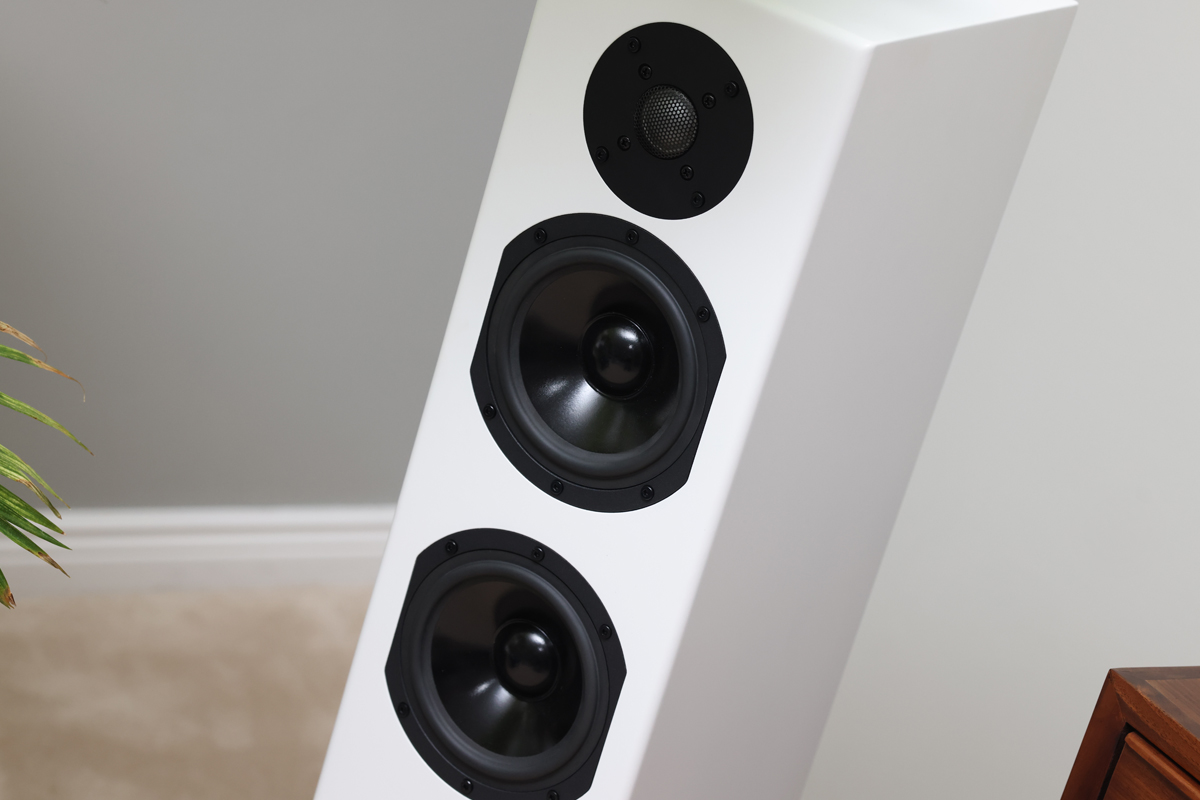
Employing dual 5″ natural-fiber midrange-woofers crossed over at 2.5kHz to a 1″ soft-dome tweeter, the Kin Play Tower system is powered, not active—the second-order (12dB/octave) passive crossover comes after the amplifier in the signal path, and there’s a single amplifier for each channel. Specified frequency response is 30Hz–22kHz (±3dB), “with proper positioning.”
The right-channel (secondary) speaker looks like a conventional passive floorstander—because that’s what it is. Below its bass-reflex port is a single pair of binding posts.
The electronics module in the primary speaker contains the inputs and outputs, Bluetooth radio, and the 200Wpc class-D amplifier that powers both speakers. It also houses the master on/off switch, an input voltage selector switch, and the three-prong IEC power inlet.
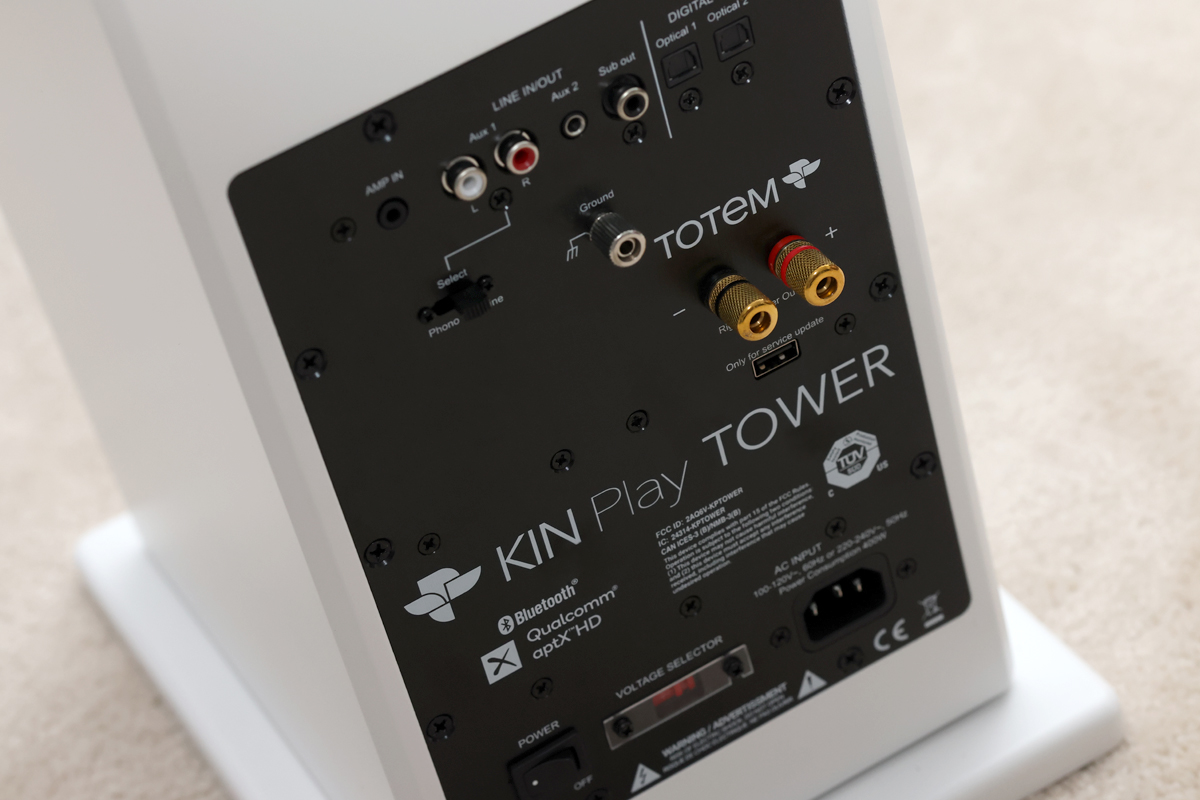
On the back panel, there’s a 3.5mm mini jack labeled “Amp In” that bypasses the Kin Play Tower’s internal preamplifier, which can be used for connecting a streaming component with volume control; a pair of RCA jacks, with a slider switch for setting to phono or line-level operation and a ground terminal for use with a turntable; a 3.5mm stereo line-level input; an RCA subwoofer output, which is low-pass-filtered at 220Hz; two optical S/PDIF (TosLink) inputs with a maximum resolution of 24-bit/192kHz; and a pair of terminals to supply the right-channel output of the Kin Play Tower’s amplifier to the secondary speaker.
Totem supplies a braided 16′ speaker wire terminated in twin banana plugs for connecting the secondary speaker, along with a TosLink optical cable, a 3.5mm stereo cable, an IEC power cable, and a small remote control.
Below the drivers on the primary speaker’s front baffle is a narrow strip with a status LED on the left and a multipurpose controller button on the right. Rotate the controller to adjust volume, push and rotate to cycle through sources, and give it a long push to put the system in Bluetooth pairing mode. That strip is behind the grille, so if you want to tweak the control, you’ll have to remove the grille first. With the grille in place, the status LED is almost invisible.
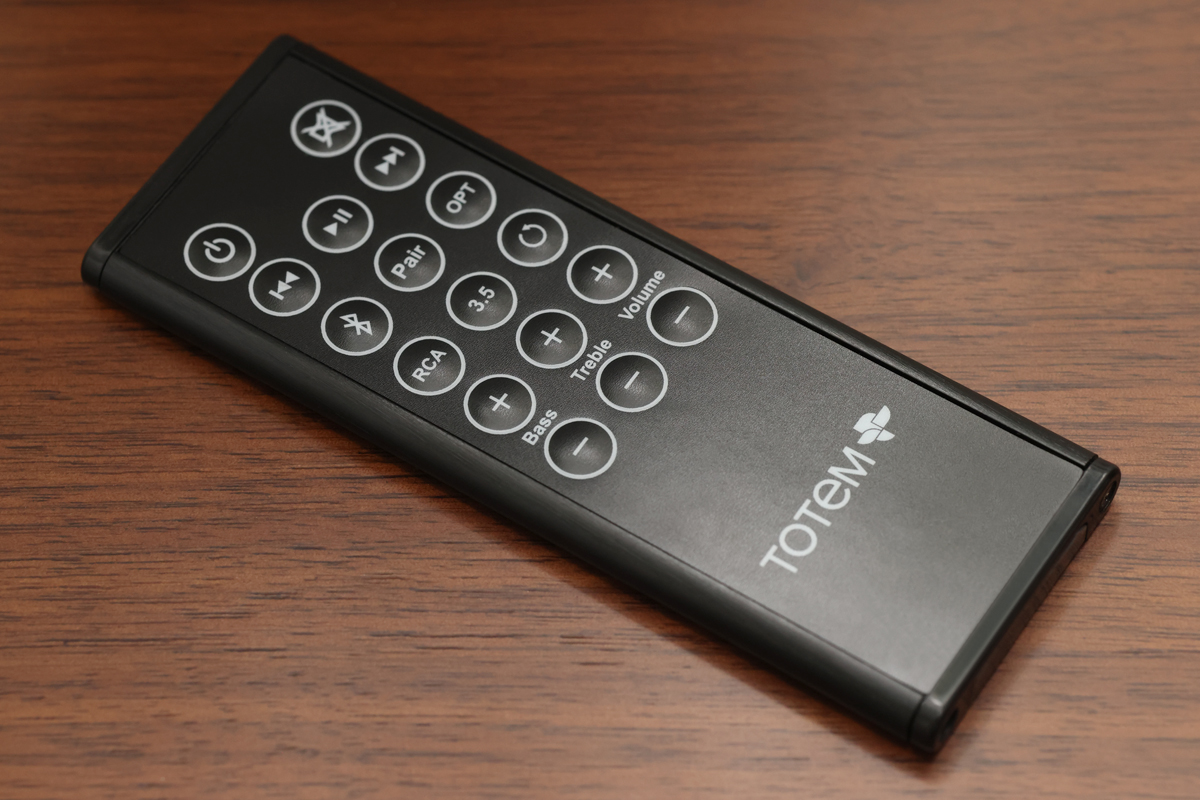
The remote control has the usual buttons for power, muting, and controlling playback, as well as for selecting sources and Bluetooth pairing. Along with bass, treble, and volume controls, there’s a button for resetting the tone controls. That last button is useful because the Kin Play Tower provides no visual indication of bass and treble settings. Push that reset button, and you know they’re set to flat.
I found operation of the remote a bit finicky. There was often a lag between pressing a button on the remote (selecting a source, adjusting volume) and performance of the desired operation. And if the remote wasn’t pointed straight at the primary speaker, the Kin Play Tower often didn’t respond.
Listening
I placed the Kin Play Tower speakers on either side of the electric fireplace in the living room of our Toronto rowhouse. In the Owners’ Manual, Totem recommends that the speakers are positioned between 1′ and 4′ from the wall behind them and 6′ to 10′ apart. The distance from the plane of the speakers to the listening position should be 1.5 times the distance separating the two speakers, Totem says. Given the layout of our living room, I couldn’t quite conform to this guidance—the room isn’t deep enough. The speakers were 6′ apart and 7′ from my listening position on the end cushion of our sectional sofa on the opposite wall, with their back panels 18″ from the wall behind them. Bass and treble were set to flat throughout my listening.

I used three sources: my Google Pixel 4a smartphone via Bluetooth, my Pro-Ject Debut Carbon Evo turntable ($869 CAD with Ortofon 2M Red Cartridge, $599 with Sumiko Rainier cartridge), and Andover Audio’s tiny Songbird streamer ($99), which I connected to one of the optical inputs.
I experienced the minor irritations typical of Bluetooth streaming. Every time I changed a setting on my phone, I heard a little thump through the speakers. Notifications and other phone sounds also played through the speakers while I was listening to music.
When spinning vinyl, I soon noticed that the Kin Play Tower’s phono stage was very quiet. With nothing playing and the volume turned up pretty high, I could hear a very faint hiss when my ear was a few inches away from the left speaker’s tweeter; 2′ away, noise was inaudible.

With Halloween coming up, I thought I’d start with something spooky. Camille Saint-Saëns’s tone poem Danse Macabre, from a live album of the same name by the L’Orchestre symphonique de Montréal, conducted by Kent Nagano (24-bit/96kHz FLAC, Decca / Qobuz), seemed just the ticket. Before streaming the track from the Qobuz app on my Google Pixel to the Kin Play Tower system via Bluetooth, I confirmed that the aptX HD codec was selected in the phone’s Bluetooth Devices menu.
The eerie opening sounded delectable, with lovely, transparent string tone. The soundstage was very wide, with plucks on the harp seeming to come from beyond the edge of the left speaker. Front-to-back layering was also good—the OSM’s brass and woodwinds were clearly presented behind the strings. I loved the sound of Andrew Wan’s 1744 Bergonzi violin during the spooky solo passages. Throughout the mournful waltz sections, it was easy to hear the action of the rosined bow on the strings and the warm resonance that followed. The upper strings had an enchanting silvery tone, and the middle and bottom strings were full and rich.
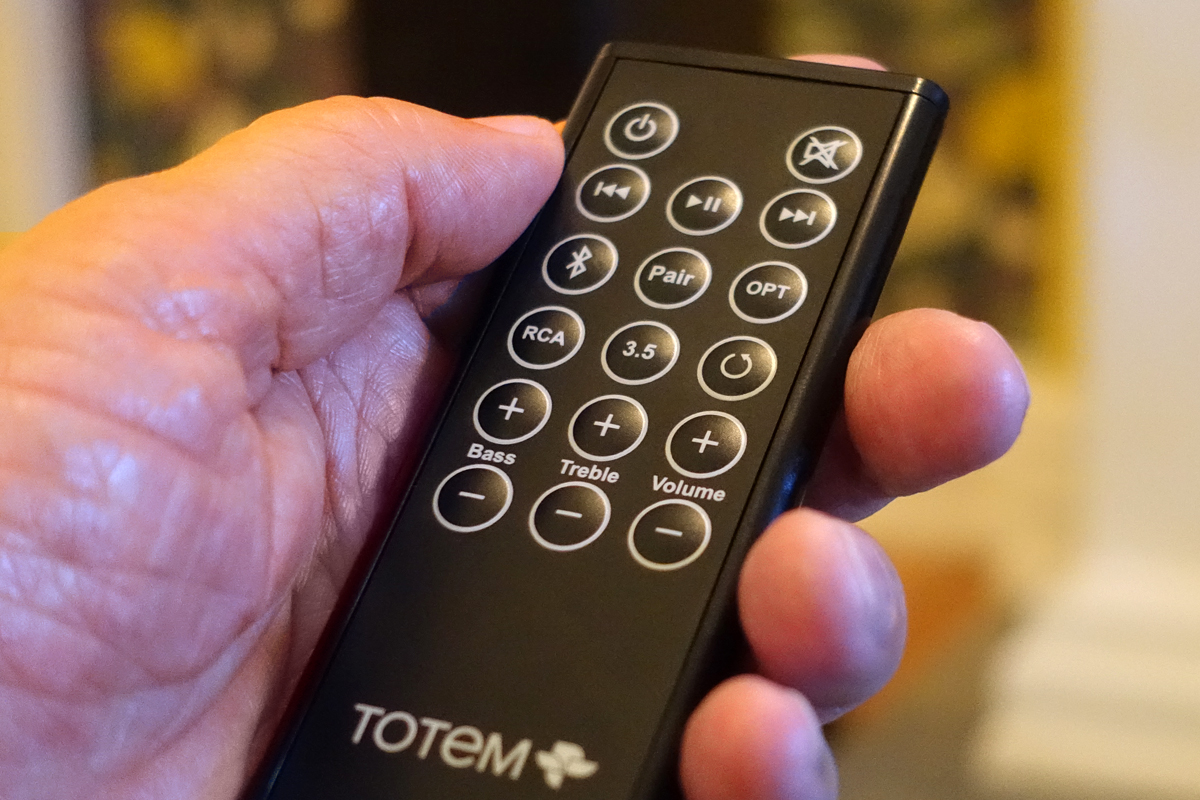
Likewise, I admired the articulation of the OSM’s violins when they were all playing together. However, the double basses, on the right, sounded somewhat thuddy and indistinct when plucked, and drony when bowed. As the dance grew wilder, the Kin Play Tower system scaled up nicely to reproduce orchestral swells. Only during the loudest sections, with strings, brass, woodwinds, and percussion all playing frenetically, did the sound become a little congested and strident.
Was I hearing the limitations of these speakers, or the Bluetooth connection? To find out, I streamed the track again from the Songbird app to the Andover streamer via Wi-Fi. There was a noticeable improvement. Orchestral climaxes sounded less congested, so that it was easier to separate the different groups of instruments. They were less strident as well—the harshness I heard with the Bluetooth connection was markedly reduced. Front-to-back layering was better; the woodwinds and brass were further behind and a little above the strings, just as they would have been at the concert. Orchestral textures were more transparent. The tone of Wan’s Bergonzi violin was sweeter—with the Bluetooth connection, high notes were more truncated. The bass definition was better, although the double basses still had some thuddiness. I’m sure my listening room, which has a couple of nasty standing waves, had something to do with that. Like so many of Decca’s recordings of the OSM, this one’s a stunner, and it sounded glorious through the Kin Play Tower system.
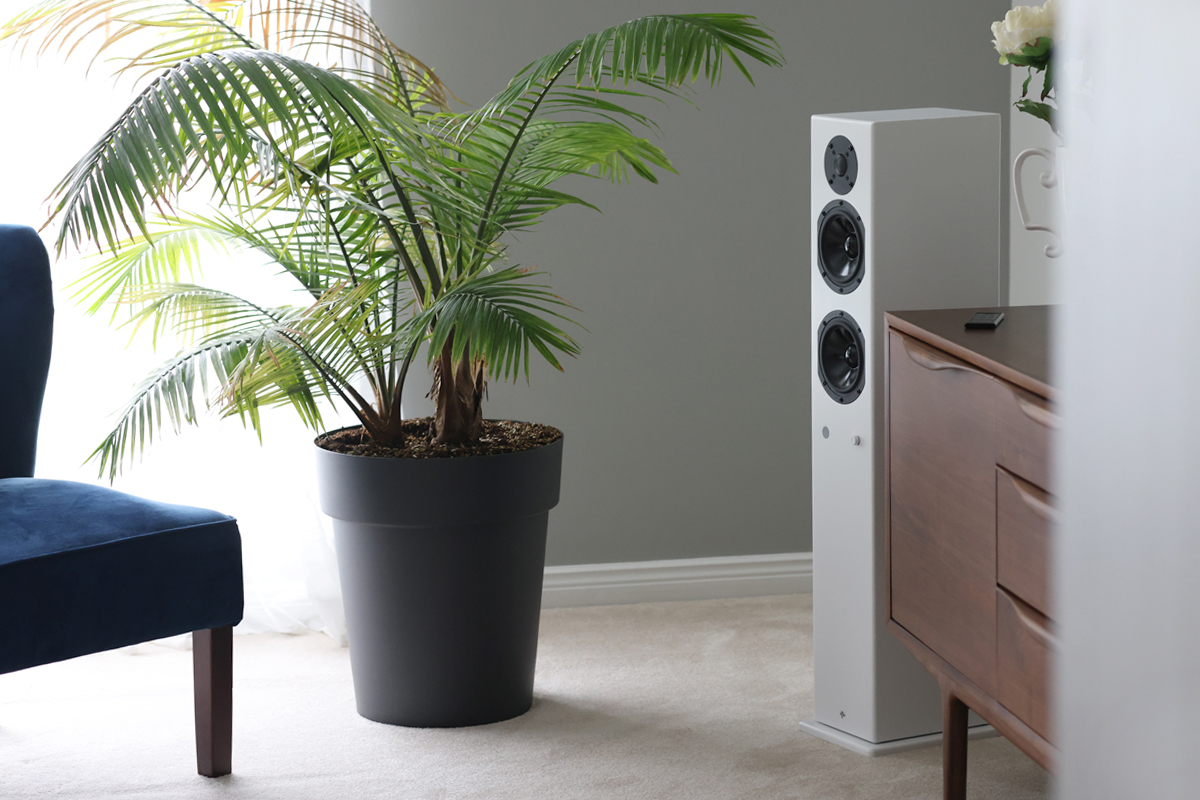
Given how well the Totem system acquitted itself with Danse Macabre’s demanding orchestral passages, I had little doubt that it could rock when needed. Just to make sure, I plunked the 2022 remastered version of Amassakoul, by the Tuareg desert-blues band Tinariwen (LP, Wedge WEDGELP0221), onto my Pro-Ject ’table and cued up the first track, “Amassakoul ’N’ Ténéré.”
At the beginning of the song, Eyadou Ag Leche beats a big calabash drum, and then switches to an electric bass guitar. Through the Kin Play Tower’s speakers, both instruments pounded, providing a robust heartbeat for the song. But they were also a little thuddy and indistinct.
This hard-rocking band has three masterful (and charismatic) guitarists, any of whom could front their own group. The Totem towers separated the three guitars and arrayed them across the front of the soundstage, so that I could admire the contribution of each player to the song: twangy accents on the left, bluesy riffs in the center, and a slashing, syncopated rhythm on the right.
The Totem towers nailed Ibrahim Ag Alhabib’s deep baritone as he sings the verses in the Tamasheq language, reproducing it with no noticeable coloration. The background singers (three men, two women) echoing Ag Alhabib’s verses were clearly set behind him. Their voices had a bit of a hard edge, but as I’ve learned from listening to this album on many other systems, that’s the nature of the recording.
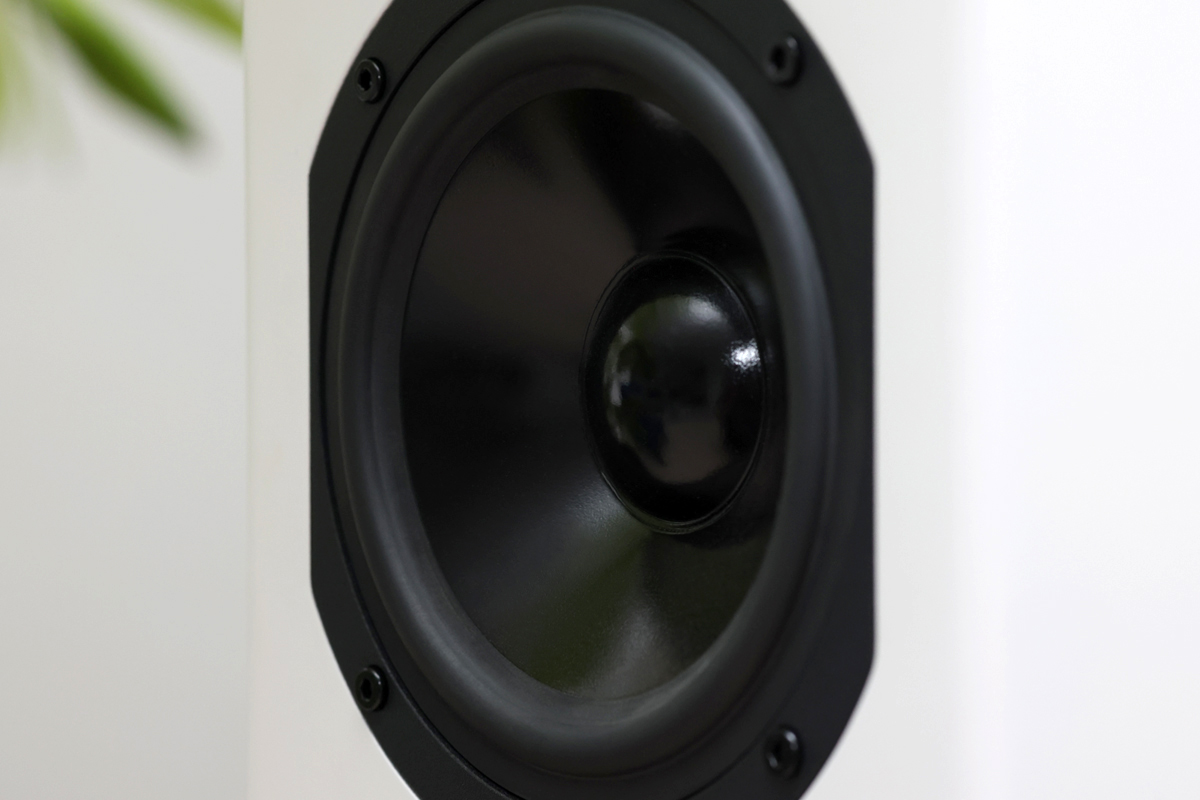
I also listened to a digital version of “Amassakoul ’N’ Ténéré” (24/88.2 FLAC, Wedge / Qobuz) through the Andover streamer. On the Qobuz stream, the calabash and bass guitar hit harder, the three guitars had more snap and slash, and Ag Alhabib’s vocals had a little more rasp. The digital stream was more dynamic, but I found the LP smoother and more inviting.
Next up was “Trouble Is a Man,” from Patricia Barber’s album of jazz standards, Clique (24/176.4 FLAC, Impex Records / Qobuz). Here, I had no issues at all with the Kin Play Tower system’s bass performance. I loved the way Patrick Mulcahy’s double bass was rendered on the far right—his plucks were snappy and segued into wonderfully woody resonance. Response was robust, right down to the lowest note. On the left side, Jon Deitemyer’s kickdrum and floor-tom beats had delicious palpability. At the opposite end of the audioband, the cymbals had a wonderful metallic shimmer, but weren’t the least bit splashy.
The delivery of Barber’s alto voice, just in front of the speaker plane, was gorgeous. There was no hint of coloration—her timbre sounded completely natural. I loved how the Kin Play Tower speakers delivered her quivery accents and the way her voice sometimes descends to a whisper, as in the last “trouble is a man I love.” With some speakers, Barber’s sibilants can sound a little hot, but that wasn’t the case here. The rendition of Barber’s piano-playing was just as wonderful. Piano tone was consistent from top to bottom, and the Totem speakers nailed her gentle, legato touch—I could visualize the varied pressure she gave to notes and chords.
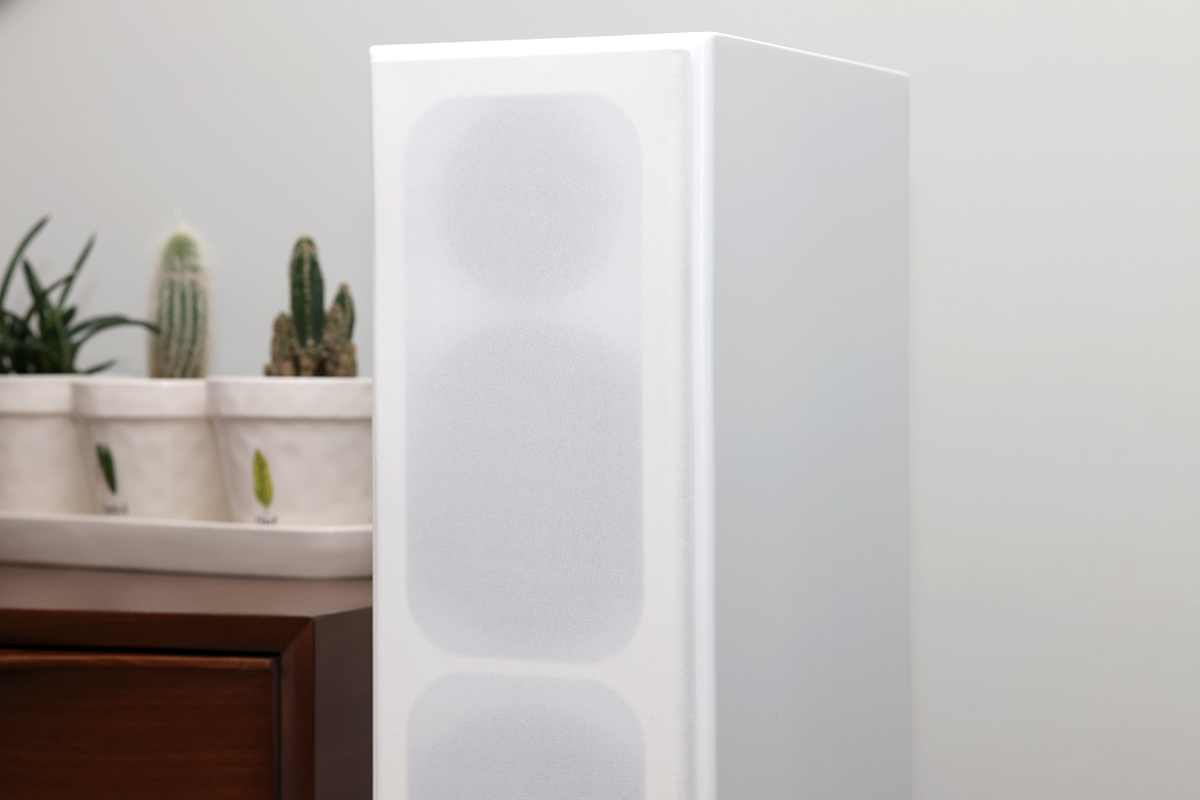
The passing of Elizabeth II and the upcoming coronation of Charles III has brought my inner monarchist to life. To indulge this, I streamed An English Coronation, by the Gabrieli Consort and Players conducted by Paul McCreesh (24/96 FLAC, Signum Classics / Qobuz), to the Totem towers via the Andover Songbird. Beautifully recorded in 2018, this album assembles music played at Great Britain’s last four coronations—and gives listeners an idea of what to expect from Charles’s.
Traditionally performed during the anointing of the new sovereign, George Frideric Handel’s rousing coronation anthem Zadok the Priest was composed for the coronation of George II in 1727 and has been played at every coronation since. The gentle orchestral opening was lovely, with beautiful, transparent string tone. When the choir belted out “Zadok the priest / And Nathan the prophet / Anointed Solomon king / And all the people rejoiced,” the Kin Play Tower system scaled up readily, delivering a magnificent presentation that conveyed the splendor of the occasion. It sent shivers down my spine. The huge choir was far behind the orchestra on the soundstage, with the sopranos, altos, tenors, and basses clearly separated. I could hear their singing reverberating throughout London’s Church of Saint Silas the Martyr, giving a palpable sense of space as well as occasion. When the choir continued, “God save the King / And may the King live forever / Alleluia, amen,” the shivers kept coming. The big climax, with a huge pedal note on the organ underpinning the choir and orchestra, was beyond thrilling. This is a demanding piece, and the Totem system delivered big-time.
Comparison
I didn’t have another set of powered tower speakers on hand to use as a comparison. The closest I could find was Q Acoustics’ Q Active 200 bookshelf speakers and Q Active Hub ($1999/system), which I placed on Q Acoustics’ matching FS75 speaker stands ($499/pair). Each Q Active 200 speaker has two front-firing 2.25″ balanced-mode radiator drivers, each powered by a 20W amplifier, and a rear-firing 4.5″ woofer powered by a 55W amp. While these two systems have very different designs and form factors, they’re very close in price.
On the Tinariwen LP, Ag Alhabib’s vocals were a little more recessed through the Qs, but sounded just as natural as they did through the Totems. Bass wasn’t as deep or robust through the Q Actives, but it was better defined, so that I was a little more aware of Ag Leche’s palms beating the calabash and his fingers plucking the bass guitar. The Qs were dynamically more compressed. The Totems sounded bigger and more powerful—more evocative of nomads traveling through the desert. The Q Active Hub’s phono stage was also noisier—with nothing playing and the volume set at normal levels, I could hear faint noise at my listening position, 7′ away.
On the Qobuz stream of Handel’s “Zadok the Priest,” the tone of the strings in the solemn opening section was a little smoother and sweeter through the Qs. While side-to-side imaging was more precise with the Qs, the Totems delivered a soundstage with more height and depth. With a vaster soundstage and greater dynamics, the Totems conveyed the splendor of the ceremony more effectively.
Conclusion
Totem Acoustic’s Kin Play Tower system has a couple of operational idiosyncrasies, such as the slow response to remote commands and the fact that the manual control and status LED are hidden behind the primary speaker’s grille. And there’s the fact that source components can only be connected to the left speaker. For listeners whose equipment stacks are close to the right speaker, this could be a dealbreaker.
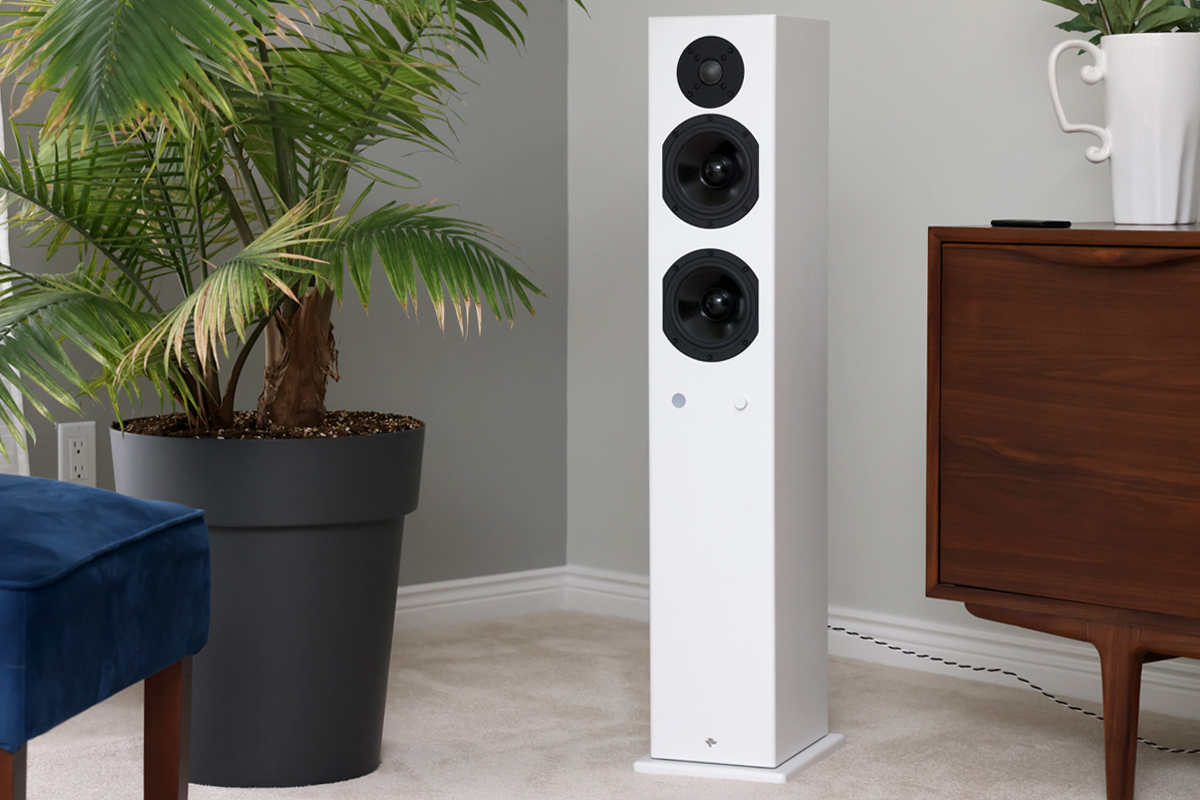
Some listeners might yearn for more connectivity than these powered towers offer. When James Hale wrote about the Kin Play Tower system in a recent “Art + Tech” column on SoundStage! Xperience, he rued the absence of a USB port for connecting a computer. Others might wish for an HDMI ARC interface for connection to an HDTV; still others for built-in Wi-Fi and streaming capability. But if you want to connect an HDTV to the Kin Play Tower, you could use one of the optical inputs. For Wi-Fi streaming, you can connect a component like Andover’s Songbird to an optical input.
Sonically, the Kin Play Tower speaker system delivers a whole lot for its asking price: thrilling dynamics, superb soundstaging and imaging, and commendable timbral accuracy from the midbass up. I very much doubt that you could match this performance in a system comprising an amplifier and pair of passive speakers with a combined cost of $2250. If this configuration appeals to you, and you’re not bothered by the quirks I’ve mentioned, Totem’s Kin Play Tower system deserves a careful audition.
. . . Gordon Brockhouse
Associated Equipment
- Turntable: Pro-Ject Debut Carbon Evo with Ortofon 2M Red cartridge.
- Active loudspeakers: Q Acoustics Q Active 200 and Q Active Hub with FS75 stands.
- Streamer: Andover Audio Songbird.
- Smartphone: Google Pixel 4a (5G).
- Network: Google Wifi four-node mesh network.
Totem Acoustic Kin Play Tower Powered Loudspeaker System
Price: $2250 per system.
Warranty: Two years, parts and labor.
Totem Acoustic
9165 rue du Champ-d’Eau
Montreal, Quebec H1P 3M3
Canada
Phone: (514) 259-1062
Fax: (514) 259-4968
Email:
Website: www.totemacoustic.com




